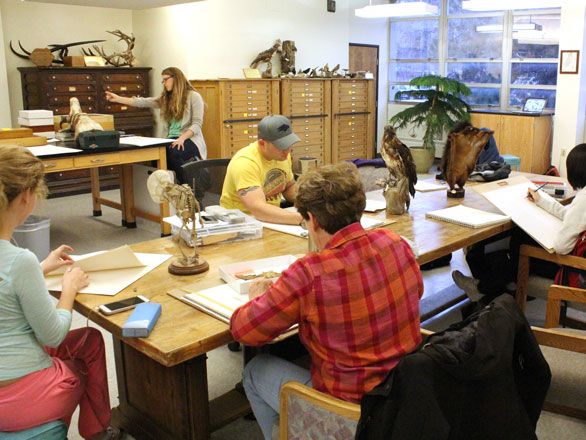Why collect?
Natural history collections form the foundation of basic and applied life sciences. Long-term collections provide unique information about how organisms and ecosystems change over time and space, allowing researchers to document differences in size, shape, genetic and molecular diversity, diet, life history, biotic interactions, and species distributions across hundreds of years. Natural history collections also form the basis of modern biodiversity science, allowing biologists to document new species, verify taxonomic identifications, and describe differences among groups, a fundamental service needed to understand the diversity in our natural communities.
Our collections
Strongly focused on Nevada and the Great Basin, our collections of plants, insects, and vertebrates are among the oldest and most extensive collections made in Nevada. Our collections include unique species and collections housed nowhere else on Earth. Our museum preserves and shares these precious objects with our entire community!
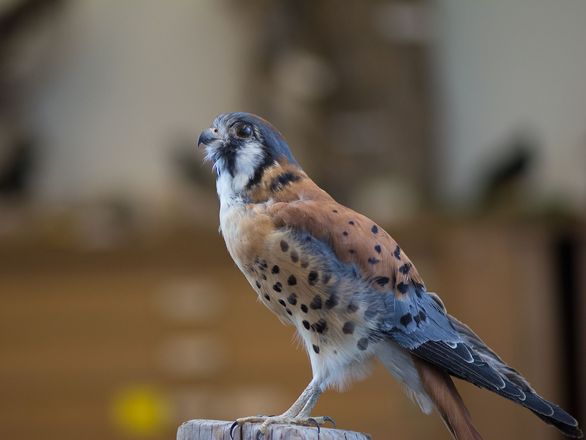
Birds and mammals
Our bird and mammal collections house some of the oldest specimens in the museum. The collection began in 1880s, and expanded greatly in 1934 with the hire of Dr. Ira LaRivers (UNR 1934-1977), a classically trained naturalist and Ph.D. student of Dr. Joseph Grinnell, the first director of the Museum of Vertebrate Zoology at UC Berkeley.
In the late 1950s, Dr. Fred Ryser joined the faculty (UNR 1958-1989), and he and his students contributed bird specimens to the collection, and used them to write his classic text on birds of the region: "Birds of the Great Basin: A Natural History" (Ryser 1985).
Currently, our bird and mammal collections serve important teaching and research functions for multiple classes and labs at UNR.
Curator: Dr. Chris Feldman
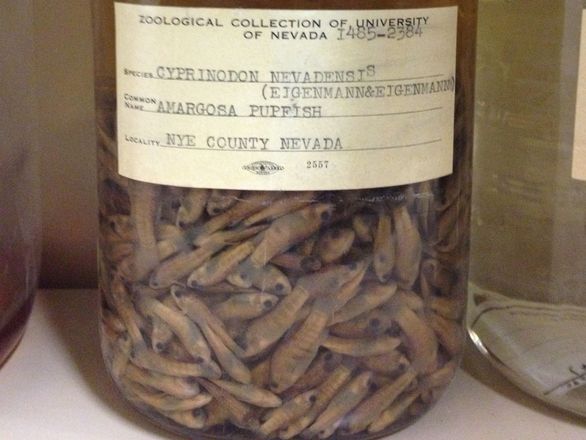
Fishes, amphibians and reptiles
The Great Basin contains among the highest levels of fish endemism in the US, with species found here that live nowhere else on earth, yet they are among the most impacted: of the 40 known fish extinctions in North America, the Great Basin has suffered 12, highest of any region on the continent.
We house 60 of the 91 fish species in Nevada, including 4 extinct species and 2 Nevada extinctions. Our fish collections date back to 1934, when Carl Leavitt Hubbs and family collected the Railroad Valley Springfish in Nye Co, NV. Extensive collections by Dr. Ira LaRivers (UNR faculty, 1934-1977) and students round out our collection and formed the basis of “Fishes and Fisheries of Nevada” (LaRivers 1962).
Dick Tracy, Robert Espinoza contributed extensively to the care of the herp collections in the 1980s-2000s, and a National Science Foundation award allowed for the preservation of these historic collections.
Curator: Dr. Chris Feldman
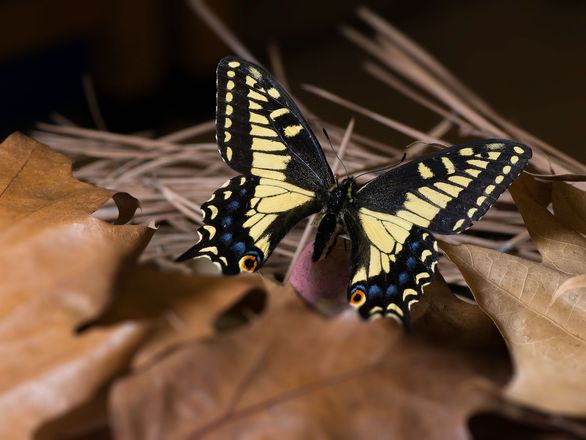
Insects
Our insect collection has two strengths: Great Basin Lepidoptera (moths and butterflies) and Neotropical Lepidoptera and their associated parasitoids. Dating back to 1890, the collection contains approximately 358,000 specimens in 29 of the 30 recognized insect orders.
Dr. Fred Ryser, and his students made extensive butterfly collections (~50,000 specimens) throughout the Great Basin starting in the late 1950s, and recent contributions are being made by a current faculty member and curator Dr. Matt Forister. Our extensive tropical insect collection comes from over 20 years of research in Costa Rica, Ecuador, and other neotropical locations by a current faculty member and curator Dr. Lee Dyer.
The insect collection is associated with multiple, ongoing, National Science Foundation-funded research projects, and many graduate students work with and contribute to our insect collections. Databasing of this extensive collection is ongoing, with a focus on Lepidoptera.
Curators: Dr. Lee Dyer and Dr. Matt Forister
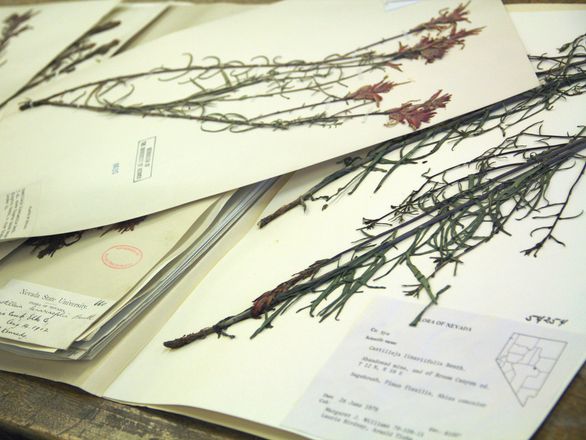
Plants
The UNR herbarium was founded at our land-grant institution in 1889, and has had many notable curators and ongoing activity since its inception. As a result, the herbarium is extensive for our region and highly representative of the flora of Nevada, with an additional strength in Great Basin flora.
We hold over 100,000 specimens, sampling almost all of Nevada’s ~3200 species, plus many other western species. Our 492 type specimens (the first recorded collection of a species) are primarily from the western US, with our oldest types dating to the 1850s and roughly half the remaining types pre-dating 1940.
We completed online databasing of our plant collection label information in 2017, and are now working towards photographing and georeferencing the entire collection.
Curator: Arnold (Jerry) Tiehm
